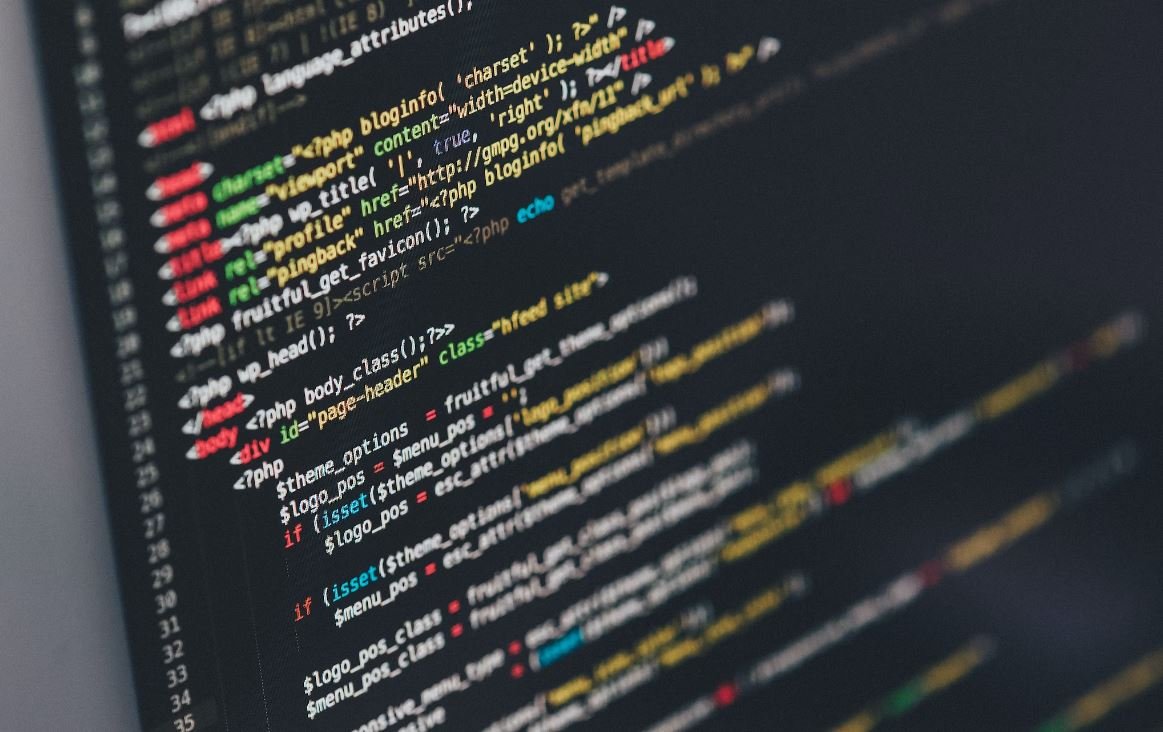How Deep Learning Is Used in the Real World
Deep learning, a subfield of machine learning, has gained significant traction in recent years. Its ability to automatically learn and extract complex patterns from large datasets has made it a powerful tool across various industries. In this article, we will explore how deep learning is used in the real world and its impact on different sectors.
Key Takeaways:
- Deep learning is a subfield of machine learning.
- It can automatically learn and extract complex patterns from large datasets.
- It has found applications in industries such as healthcare, finance, and autonomous vehicles.
- Deep learning models are trained using neural networks with multiple layers.
- These models require significant amounts of data and computational resources.
Applications of Deep Learning
Deep learning has found diverse applications across industries due to its ability to analyze and interpret complex data. In healthcare, deep learning is being used for medical imaging, diagnosis prediction, and drug discovery. In finance, it helps detect fraud, predict stock market trends, and improve trading algorithms. Autonomous vehicles rely on deep learning for object recognition, path planning, and decision-making. The applications extend to natural language processing for voice assistants, recommender systems for personalized recommendations, and more.
In healthcare, *deep learning models have shown promising results in early cancer detection* by analyzing medical images with high accuracy and speed. This enables timely treatment and improves patient outcomes.
Benefits of Deep Learning
Deep learning offers several advantages over traditional machine learning approaches. Firstly, deep learning models can automatically extract features from raw data, eliminating the need for manual feature engineering. This makes it more adaptable to different domains and saves time for data scientists. Secondly, deep learning can handle large and complex datasets, enabling the discovery of intricate patterns that might be missed by human experts. Finally, deep learning models can continuously improve their performance with more data and iterations, making them adaptable to evolving environments and challenges.
- Deep learning models can automatically extract features from raw data.
- They can handle large and complex datasets.
- Deep learning models can continuously improve their performance.
Challenges and Limitations
Despite its advantages, deep learning also faces challenges and limitations. One major challenge is the need for large amounts of labeled training data. Deep learning models require extensive datasets for training, which can be time-consuming and expensive to acquire. Additionally, deep learning models can be computationally intensive and require powerful hardware infrastructure to train and deploy. Interpretability is another limitation, as the complex internal workings of deep learning models make it difficult to understand and explain their decisions.
- Deep learning requires large amounts of labeled training data.
- Training and deploying deep learning models can be computationally intensive.
- Understanding and explaining the decisions of deep learning models is challenging.
Real-World Examples
Let’s take a look at some real-world examples of deep learning applications.
Table 1: Deep Learning Applications by Industry
| Industry | Deep Learning Application |
|---|---|
| Healthcare | Medical imaging analysis |
| Finance | Algorithmic trading |
| Retail | Personalized recommendations |
| Automotive | Autonomous driving |
Table 2: Deep Learning Impact on Healthcare
| Application | Deep Learning Benefit |
|---|---|
| Medical imaging analysis | Improved accuracy and speed of diagnosis |
| Drug discovery | Accelerated identification of potential drug candidates |
| Early cancer detection | Timely treatment and improved patient outcomes |
Table 3: Deep Learning Impact on Finance
| Application | Deep Learning Benefit |
|---|---|
| Fraud detection | Improved identification of fraudulent transactions |
| Stock market prediction | Enhanced trading strategies and decision-making |
| Algorithmic trading | Automated execution of trading strategies |
These examples highlight the diverse range of applications where deep learning is making a significant impact. As more data becomes available and computational power increases, the potential of deep learning in the real world continues to grow.
Conclusion
Deep learning has become an invaluable tool in various industries, revolutionizing the way data is analyzed and processed. From healthcare to finance and beyond, its ability to automatically learn complex patterns from large datasets has enabled breakthroughs and improvements in real-world applications. As technology continues to advance, deep learning is poised to make even greater strides and unlock new possibilities.

Common Misconceptions
Misconception 1: Deep learning is only used in academic research
Many people tend to associate deep learning with academic research and believe that it is not widely used in real-world applications. However, this is a common misconception as deep learning has found numerous applications across various industries.
- Deep learning is used in healthcare for medical image analysis and diagnosis.
- It is deployed in autonomous vehicles for object detection and scene understanding.
- Deep learning is employed in finance for fraud detection and algorithmic trading.
Misconception 2: Deep learning requires massive amounts of data
Another misconception is that deep learning models require enormous amounts of data to be effective. While it is true that deep learning models often benefit from large datasets, they can still provide valuable insights with smaller amounts of data.
- Transfer learning techniques enable the reuse of pre-trained models, reducing the need for extensive data.
- Model compression and quantization techniques help reduce the data required for deep learning models.
- Methods like data augmentation and sampling techniques can be utilized to generate additional training data from limited datasets.
Misconception 3: Deep learning is a black box and lacks interpretability
Deep learning models are often viewed as black boxes, making it difficult to interpret their decision-making process. However, strides have been made towards addressing this misconception through various techniques and methodologies.
- Methods like attention mechanisms provide insights into which parts of an input the network is paying attention to.
- Visualization techniques allow researchers to understand and visualize the inner workings of deep learning models.
- Model-agnostic interpretability techniques, such as SHAP values, can be used to interpret the decisions made by deep learning models.
Misconception 4: Deep learning is only effective for image recognition tasks
One of the most prominent misconceptions surrounding deep learning is that it is solely effective for image recognition tasks. While deep learning has shown remarkable success in image-related tasks, its application extends far beyond that.
- Deep learning is used for natural language processing tasks like machine translation and sentiment analysis.
- It is employed in recommendation systems to provide personalized recommendations based on user behavior.
- Deep learning finds applications in speech recognition and synthesis, powering virtual assistants and voice-controlled devices.
Misconception 5: Deep learning will replace human intelligence
One prevailing misconception about deep learning is that it will eventually lead to the replacement of human intelligence. However, deep learning should be seen as a tool that enhances human capabilities rather than replacing them.
- Human involvement is crucial for defining the problem, setting objectives, and interpreting the results obtained from deep learning models.
- Deep learning complements human intelligence by automating repetitive tasks, enabling more efficient decision-making processes.
- Human creativity and critical thinking are still required to effectively leverage deep learning in real-world scenarios.

Applications of Deep Learning in the Healthcare Industry
Deep learning has been revolutionizing the healthcare industry by enhancing diagnostic accuracy, improving patient outcomes, and enabling personalized medicine. The following table illustrates various applications of deep learning in healthcare:
| Application | Description | Impact |
|---|---|---|
| Cancer Detection | Deep learning models analyze medical images to detect early-stage cancers with high accuracy. | Improves early detection and treatment, leading to higher survival rates. |
| Drug Discovery | Deep learning algorithms analyze vast volumes of data to identify potential drug candidates. | Accelerates the drug discovery process, reducing development time and costs. |
| Radiology Image Analysis | Deep learning assists radiologists in analyzing X-rays and MRIs, improving diagnosis accuracy. | Reduces human error and enhances precision in radiological examinations. |
| Genomics | Deep learning models analyze genomic data to identify disease patterns and predict treatment outcomes. | Enables personalized medicine and targeted therapies. |
Deep Learning in Autonomous Driving
Deep learning plays a pivotal role in the development of autonomous driving technologies. The following table highlights key applications of deep learning in the realm of autonomous vehicles:
| Application | Description | Impact |
|---|---|---|
| Object Detection | Deep learning enables vehicles to detect and classify objects in their surroundings, enhancing safety. | Reduces the likelihood of accidents by providing real-time awareness of the environment. |
| Path Planning | Deep learning algorithms help autonomous vehicles plan optimal routes based on real-time traffic data. | Improves efficiency, reduces congestion, and enhances the overall driving experience. |
| Driver Monitoring | Deep learning allows vehicles to monitor the driver’s attention level to enhance safety and prevent accidents. | Prevents accidents caused by drowsiness or distracted driving. |
| Vehicle Localization | Deep learning models accurately determine a vehicle’s location using sensor data and mapping information. | Enables precise navigation and localization, critical for autonomous driving. |
Deep Learning in Natural Language Processing
Deep learning has significantly advanced the field of natural language processing (NLP). The table below showcases how deep learning techniques are transforming NLP:
| Application | Description | Impact |
|---|---|---|
| Sentiment Analysis | Deep learning models analyze text to determine the sentiment expressed, facilitating customer feedback analysis. | Helps businesses gain insights into customer opinions and make data-driven decisions. |
| Language Translation | Deep learning enables accurate and fluent translation between different languages. | Facilitates seamless communication and breaks down language barriers. |
| Speech Recognition | Deep learning algorithms convert spoken language into written text, powering virtual assistants and transcription services. | Improves human-computer interaction and enhances accessibility for individuals with speech impairments. |
| Text Summarization | Deep learning models extract key information from textual content, generating concise summaries. | Enables quick understanding of large amounts of text and aids in information retrieval. |
Deep Learning in Finance
Deep learning has found numerous applications in the finance industry, revolutionizing trading strategies and risk management. The table below outlines key implementations of deep learning in finance:
| Application | Description | Impact |
|---|---|---|
| Stock Market Prediction | Deep learning models analyze historical financial data to predict future stock prices and market trends. | Aids investors in making informed decisions and improves trading outcomes. |
| Anomaly Detection | Deep learning algorithms detect abnormal patterns in financial transactions, helping identify fraudulent activities. | Improves security measures and reduces financial losses due to fraud. |
| Credit Scoring | Deep learning models analyze diverse data sources to assess creditworthiness and predict loan defaults. | Enhances lending decisions, reduces default rates, and improves risk management. |
| Algorithmic Trading | Deep learning algorithms automate trading decisions by analyzing market data in real-time. | Improves trading efficiency, eliminates human bias, and optimizes investment strategies. |
Conclusion
Deep learning has emerged as a powerful tool across various industries, unleashing remarkable potential and transforming how we approach complex problems. From healthcare and autonomous driving to natural language processing and finance, the applications of deep learning are diverse and impactful. By leveraging large amounts of data and complex neural networks, deep learning models have the ability to bring about unprecedented advancements in accuracy, efficiency, and decision-making capabilities. As technology continues to evolve, deep learning is poised to further revolutionize the real-world applications we encounter on a daily basis.
Frequently Asked Questions
What is deep learning?
Deep learning is a subset of machine learning and artificial intelligence that focuses on the design and training of neural networks. It aims to enable computers to learn and make intelligent decisions by mimicking the human brain’s neural networks.
How is deep learning beneficial in the real world?
Deep learning has wide-ranging applications in various fields, including healthcare, finance, autonomous vehicles, natural language processing, computer vision, and many more. It can provide accurate predictions, automate complex tasks, improve efficiency, and enable innovative solutions.
What are some real-world applications of deep learning?
Deep learning is used in autonomous driving systems, fraud detection, medical diagnoses, voice recognition, recommendation engines, image and video analysis, natural language understanding, and translation, just to name a few.
How are deep learning models trained?
Deep learning models are trained using large amounts of labeled data. The training process involves feeding the data to the neural network, adjusting the network’s weights and biases, and iteratively optimizing its performance through algorithms like gradient descent and backpropagation.
What are the challenges of implementing deep learning in real-world scenarios?
Some challenges include the need for substantial computational resources, acquiring and labeling large datasets, avoiding overfitting and underfitting, interpreting and explaining model decisions, addressing privacy and ethical concerns, and dealing with biases that may be present in the data.
How does deep learning differ from traditional machine learning?
While both deep learning and traditional machine learning involve training models on data, deep learning utilizes artificial neural networks with multiple layers of interconnected nodes, making it particularly effective in extracting complex patterns and features from data.
What are the main types of deep learning algorithms?
The main types of deep learning algorithms include convolutional neural networks (CNN) used for image and video processing, recurrent neural networks (RNN) for sequential data such as language, long short-term memory (LSTM) networks for processing time series data, and generative adversarial networks (GAN) for generating new data samples.
What kind of data is required for deep learning?
Deep learning models generally require large amounts of labeled training data to effectively learn patterns and make accurate predictions. The quality and diversity of the data play a significant role in the model’s performance, and it is crucial for the data to be representative of the real-world scenarios the model will encounter.
What are some popular deep learning frameworks?
Popular deep learning frameworks include TensorFlow, PyTorch, Keras, Caffe, and Theano. These frameworks provide a high-level interface to build, train, and deploy deep learning models efficiently.
How is deep learning contributing to advancements in artificial intelligence?
Deep learning has played a pivotal role in several significant advancements in artificial intelligence. By enabling computers to process and analyze vast amounts of data, deep learning models can accurately classify objects, understand natural language, improve decision-making, and even create new content, driving the progression of AI technology.




